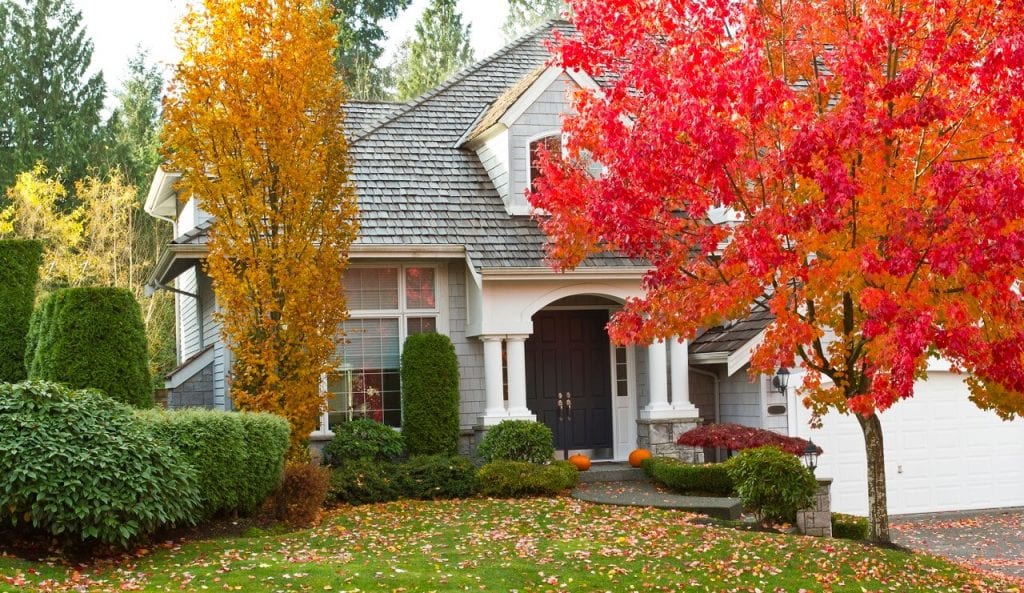Fall lawn maintenance is the secret to keeping your lawn healthy through the cooler months of the year. Here are a few tips for helping your lawn stay healthy so it can grow back lush and green in the spring.
Taking Care of Fallen Leaves
Although vivid fall leaves are beautiful, don’t let them collect on your grass for long. It’s best to clean up the leaves every week or so. Leaf cover blocks the sunlight, traps excess moisture, and causes dead spots and lawn diseases.
If you don’t have many trees that drop leaves, mow over the fallen leaves to break them into smaller pieces to fertilize your lawn. If you prefer a perfectly tidy lawn, or if your HOA requires it, rake leaves and use them to mulch the flower beds, newly planted trees, or add them to the garden when you till the soil.
Fall Lawn Maintenance Involves Removing Thatch
Living and dead plant matter that falls between the surface of your lawn and the roots is called thatch. A bit of this organic debris is good, but a layer of thatch exceeding one-half inch can damage your grass and cause disease. Over a few years, thatch build-up starts blocking water and nutrients from the roots.
Dethatch your lawn with a manual or powered dethatching rake before the leaves begin to fall and your grass will grow back healthier in the spring. If your lawn has a very thick layer of thatch, you may want to hire a professional for the best results.
It’s a Great Time for Seeding
Whether you’re over-seeding or patching bare spots, fall is a good time to add grass seed. Seed usually sprouts faster in late September to October compared to spring seeding.
Bottom heat helps seeds sprout more quickly, and in the fall, your seed is getting bottom heat because the soil is warm down deep after summer. In spring, the cold is still deep in the soil from winter, so seeds sprout more slowly.
Fertilizing is Important Fall Lawn Maintenance
The growth of your lawn slows as temperatures fall. Unlike the trees, it’s not going to sleep just yet, it’s just building nutrient reserves. Give it a boost with an application of fall fertilizer.
The timing of this all-important fall lawn maintenance step is crucial. The actual calendar date depends on your local weather patterns. September is too early almost everywhere; the best time for that last application of nutrients in mid to late autumn in most areas.
Don’t Turn Off the Sprinklers
Fall tends to be a wetter season than summer, but you still want to make sure your lawn gets adequate water since it’s how plants absorb food. Consistent moisture helps your grass to store enough nutrients to survive through winter dormancy.
Keep Mowing on a Regular Schedule
Don’t let your grass go into winter too tall. The growth may have slowed considerably, but you should continue to mow the lawn, though it will be much less frequently. When you mow, cut no more than 1/3 of the height.
All Pro Property Inspections provides home inspection services to San Diego and the surrounding areas. Contact us to book your appointment.

